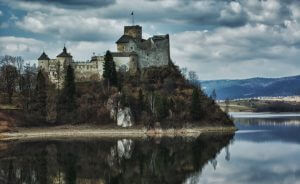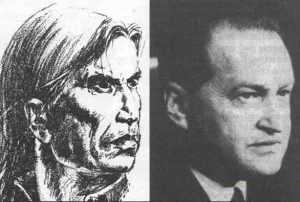 4
4

Examining the pyramid with the mions
 19. 04. 2024
19. 04. 2024



 4
4

 19. 04. 2024
19. 04. 2024

 1
1

 17. 04. 2024
17. 04. 2024
 6
6

 16. 04. 2024
16. 04. 2024
 03. 05. 2017
03. 05. 2017

On the access road to Niedzica Castle (also known as Dunajec Castle) in the Polish region of Spiš in the Eastern Tatras, there is a sign Attention, Phantom! This most famous local apparition is the spirit of the beautiful Inca princess Umina, who was murdered here by Spanish mercenaries at the end of the 18th century.
The castle was built in the early 14th century, when this area belonged to northern Hungary and served as a defensive line against Poland. He has changed "nationality" five times since then. He moved from Hungary to Austria-Hungary, then to Czechoslovakia, and in 1920 he was annexed by Poland. But until 1945, the owners of the chateau remained Hungarian nobles.
After its nationalization in 1946, a stash with a lead box was found under one of the stairs, in which there were several golden Indian jewels and a kip, a nodal font of the ancient Incas. All attempts to decipher it failed, and it later disappeared in an incomprehensible way.
 The history of this find can be traced back to 1760, when Sebastian Berzeviczy, a distant relative of the then owners of Niedzica, went to Peru to look for Inca gold. There he fell in love with the Inca princess, the direct heiress of the ruler Atualpa, and married her, but the princess died in the birth of her daughter.
The history of this find can be traced back to 1760, when Sebastian Berzeviczy, a distant relative of the then owners of Niedzica, went to Peru to look for Inca gold. There he fell in love with the Inca princess, the direct heiress of the ruler Atualpa, and married her, but the princess died in the birth of her daughter.
Berzeviczy remained in Peru and even took part in the last great uprising against the Spaniards on the side of the Incas. He married his daughter Umina to the rebel leader, the great-grandson of the last Inca ruler, Tupak Amar. He then went to Europe with her, her husband and the Inca court. At first they lived in Venice, but after the Spaniards killed Umin's husband, they moved to Niedzica Castle.
If Polish historians can be trusted, then part of the mysterious Inca treasure traveled together with the courtiers and the princess. In 1797, the court of the Inca Princess was again traced by the Spaniards. Umina died only to break the ruling lineage of the Incas. To protect his grandson, the last Inca prince, Sebastian Berzeviczy gave him to his relative for adoption. And as the legend says, he buried the treasure somewhere around the castle and marked the place in a kip.
The last direct descendant of Tupak Amar, Anton Beneš, lived near Brno in the 19th century and died without ever caring about the treasure. But his great-grandson Andrzej Benesz, who subsequently became vice-president of the parliament of the Polish People's Republic, was very interested in this topic. In the 30s, he began searching for the treasure of his ancestors.
In 1946, Benesz found a document in Cracow that his great-grandfather had been adopted and also about the location of the kip, which he later found hiding under a staircase.
But deciphering the script was not easy, as even the Indians themselves had forgotten the language of the kipu. There are only a few people in the world who know him and they could be counted on the fingers of one hand. In the 70s, two Polish expeditions set out for Peru to decipher it. However, the two disappeared without a trace.
At the end of February 1976, Andrzej Benesz himself died in a car accident when he drove from Warsaw to Gdańsk, where he was to meet two foreigners, experts in nodal writing.
His son, a Gdanski attorney, has refused to talk about this subject so far and thinks that just cursed gold was the cause of his father's death.
The Polish historian Alexandr Rovinski has been dealing with the history of the mysterious treasure for thirty years. It is believed to be located seventy kilometers north of Niedzica, in the ruins of a castle that also stood on the Dunajec River.
It is said that the last owner of the treasure, a Krakow businessman, ordered the walls of the castle underground to be walled up with three hundred tons of concrete, explaining that not only does he not intend to take the treasure, but he does not even want to think about it because it only brings misfortune…